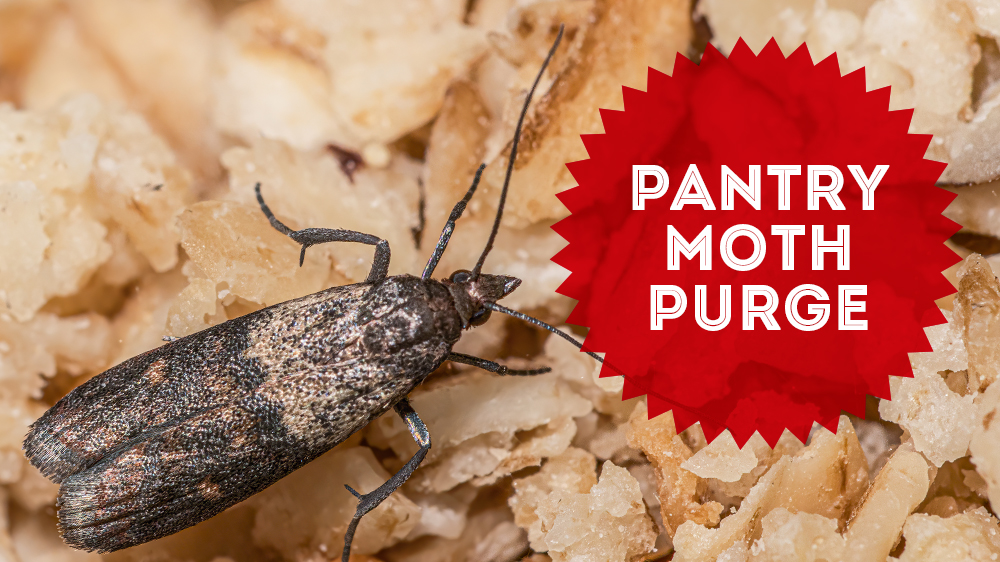While spring cleaning is often the norm, we think one great big summer clean out of your pantry is even better because that’s when pantry moths are most likely to reproduce (and your kids are home to help)! You may be asking yourself What’s a pantry moth? And how would I know if I have them? We’re here to tackle those questions and more.
What are pantry moths?
With gray, tan and brown features, pantry moths are a common species of meal moth that feeds primarily on dried foods, like rice, flour, pasta, cereal, spices, nuts and more. As their name suggests, you’ll always find them near food – in pantries, kitchens, grocery stores and even food processing plants.
How can I tell if I have pantry moths?
Oftentimes, you’ll spot the adults flying around your kitchen – but they aren’t the ones you need to be worried about. It’s the larvae that are hatched in your dried goods (females can lay 400 eggs at a time), producing the moths which will eat through your supply and leave excrement and silk webs in their tracks. While the moths themselves may not bite or sting humans, they can easily spoil the food you’ve worked hard to provide.
How did they get in?
Believe it or not, the most common way for pantry moths to get a foot (or wing) in your door is through the dried goods that you bought at the grocery store. Factories and processing plants often house them without even knowing it. But this shouldn’t stop you from purchasing these items – see the section below for how you can minimize the risk of bringing them into your home.
How do I get rid of moths in my pantry?
If you suspect that pantry moths may be in your presence, it’s important to act as quickly as possible because they can spread very rapidly. Follow these steps:
- Clean out your pantry and throw away any sort of containers where you suspect moths, whether you spot holes in packaging, webs in your food or caterpillars themselves eating away at your dried goods. Be sure that you take the garbage outside.
- Vacuum up your pantry, kitchen and in the general vicinity of your infestation. Then wipe down the entire area -walls, shelves, door hinges, baseboards and floors – with warm water and soap (and vinegar if you have it).
- Put any food deemed safe in airtight containers -plastic, metal or glass- to avoid an opening for moths to slip in.
How do I prevent pantry moths from invading my kitchen?
Save yourself from the stress of having to manage an infestation, by taking these precautionary steps:
- When purchasing dried goods at the grocery store, always check the packaging for any signs of holes or tears before placing it in your shopping cart. And then when you get home, you can be extra safe by placing your goods in the freezer for a few days before putting them away.
- Start using as many airtight containers as possible to store your dry goods.
- Store pet food and bird seed away from your food.
- Use peppermint as a natural deterrent -pantry moths aren’t a fan of the smell.
If you believe pantry moths have made themselves at home in your pantry, you can always give The Bug Man a call at 923-BUGS. Our professionals know exactly how to rid your kitchen of these pests for good. Get in touch now!




